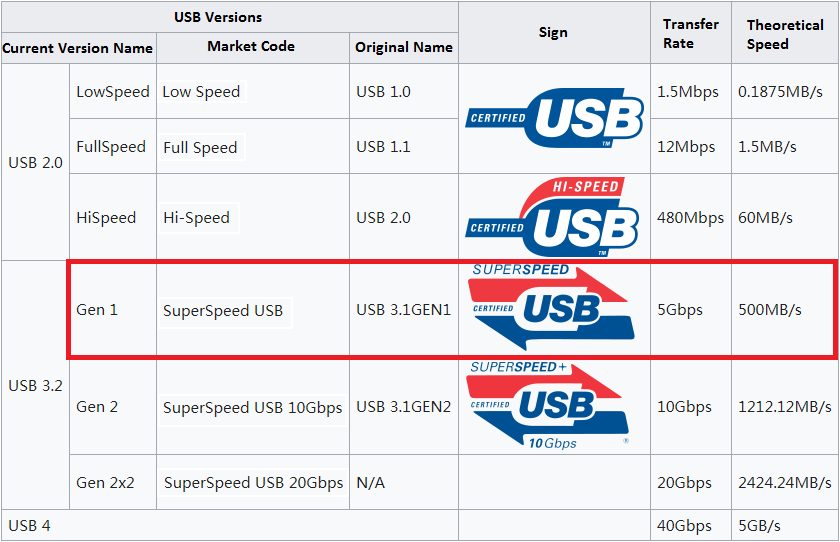
The Mini-A, Mini-B and Micro-A connectors were all discontinued in the USB 3.0 specification as they were rarely used at all. The redesign of the physical connector means than USB 3.0 cables are unable to use USB 2.0 ports, however, USB 2.0 cables can use USB 3.0 ports. In the USB 3.0 specification, the connector for Micro-B has been redesigned to add an extra block to the side of the connector with five extra pins. The Micro-B connector was typically used in mobile devices such as phones and tablets, however more recently, the USB-C connector is used instead. The Micro-B connector is a much flatter rectangle than the Type-A connector and has two angled corners at the top. USB 2.0 cables are, however, capable of fitting in USB 3.0 connectors.

The redesign means that USB 3.0 Type B cables cannot fit in USB type 2.0 ports. In USB 3.0 the top of the connector has been redesigned to be taller to add five new pins. Type-B connectors are typically used for devices such as printers. The Type-B connector is much more square in appearance, with the top two corners angled for USB 2.0. The USB 2.0 connector has 4 connector pins, the USB 3.0 version increases this to 9, allowing faster speeds but supporting full compatibility. It’s typically used for devices such as USB memory sticks, cable-to-socket connectors and data transfer cables. The Type-A connector is the standard rectangular one that everyone should recognize when they see a ‘USB stick’.

Other advantages include the reduced number of connector standards and backwards compatibility. USB 2.0 was able to transmit data at a maximum speed of 480Mb/s while the USB 3.0 connectors can reach speeds of up to 5Gb/s.

The primary advantage (and difference) of USB 3.0 over USB 2.0 is the increased speed. USB 3.0 simplifies this down to three connectors that are all backwards compatible with their previous counterparts. USB 2.0 (the kind you’re most likely using for devices older than a few years) specifies six standard connectors A, B, and then both a Mini and Micro version of each.


 0 kommentar(er)
0 kommentar(er)
